How Houston’s Historic Burger Joints Have Stood the Test of Time
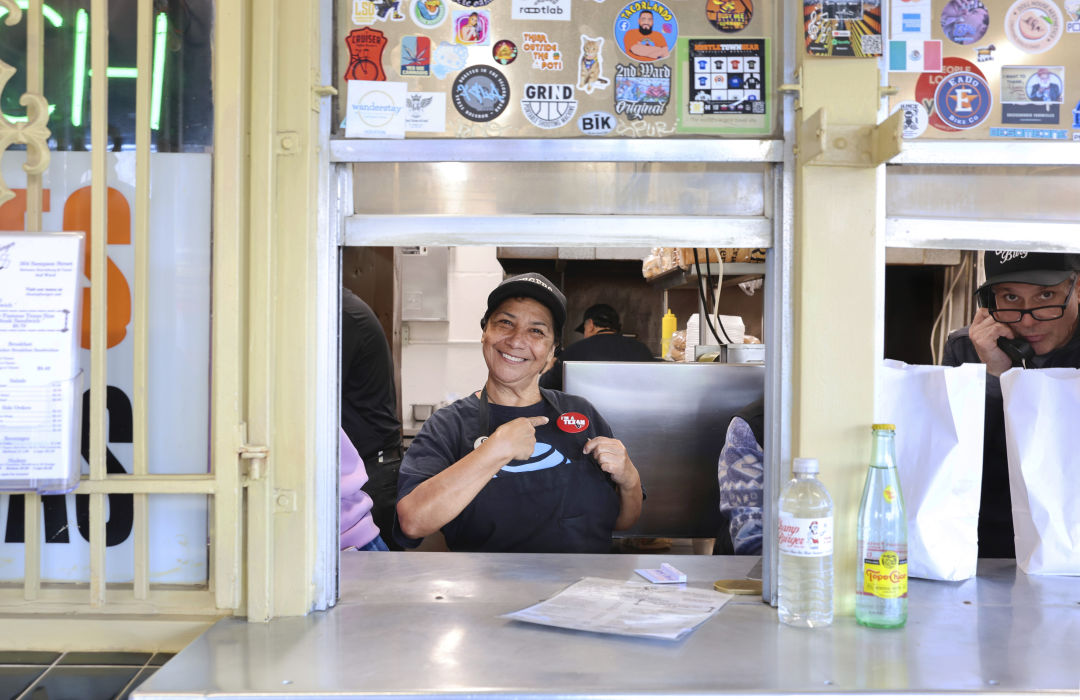
Historic burger restaurants like Champ Burger, founded in 1963, have been feeding Houston families for decades. They're becoming increasingly rare in Houston.
Image: Amy Kinkead
At the corner of Sampson and Garrow in Second Ward, a few blocks away from the buzzy new development known as The Plant, you’ll find one of Houston’s oldest burger restaurants. Opened in 1963 by the late Michael Saladino, Champ Burger has fed multiple generations of families in this historically working class—but rapidly gentrifying—neighborhood. Michael’s son, Chris Saladino, who started working full-time at Champ Burger in 1990, runs the business today. Like the owners of many mom-and-pop-style spots, he is rarely away from his restaurant.
“My dad basically gave his life for Champ Burger. It takes 100 percent. You have to work all day long. You have to watch the place,” Saladino says. “I see a lot of people who open a business and they’re never there. They have some youngster working the register. You have to be there.”
On a recent weekday morning, Saladino, dressed in warm clothing to combat the unexpectedly brisk weather, arrived early so he could blow leaves off the shop’s patio while waiting for the day’s food deliveries to start trickling in. As Saladino went about his work, a longtime customer, a man in his middle years who has been eating at Champ Burger since he was a child, popped by for some teasing banter.
“I just want to tell you, this is the worst goddamn place to get a hamburger,” the man jokes.
“He’s one of our best customers. Joe, come on,” Saladino laughs.
“You got my senior citizen discount?” Joe asks with a grin.
“Next week we’ll have it,” Saladino says.
It’s the kind of familiar conversation you would expect to happen outside of a restaurant that has served the same community for over 60 years, but one that is becoming increasingly rare in Houston as the forces of gentrification threaten the viability of these historic businesses.
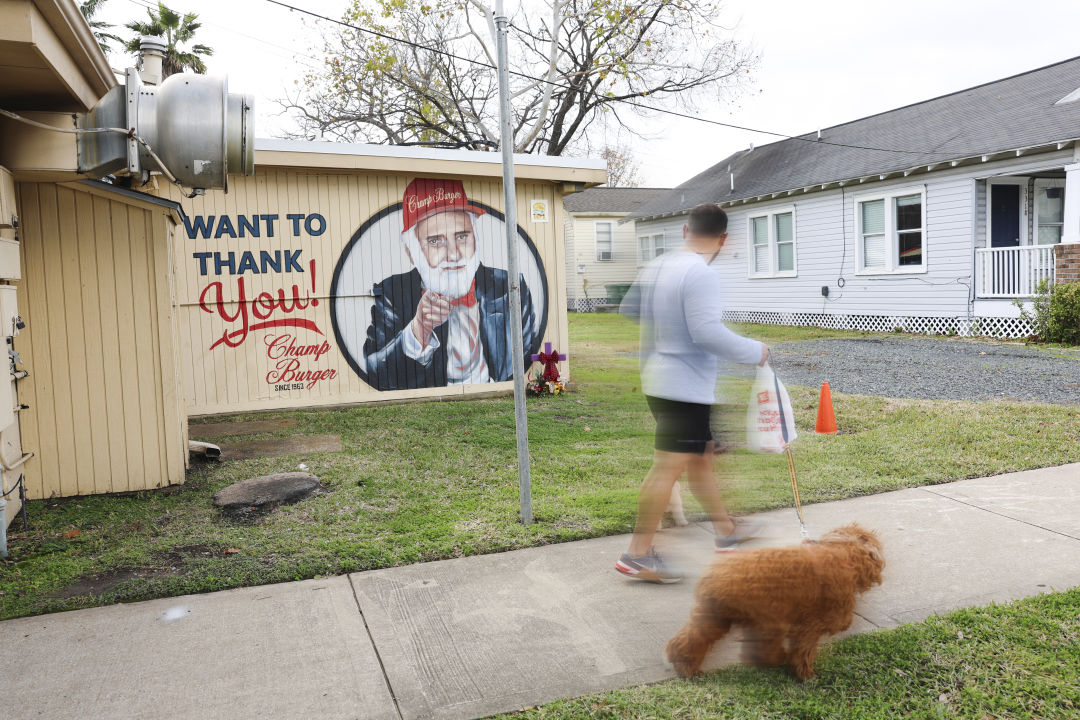
Although "Mr. Champ," as he was affectionately called, passed away in 2017, his memory lives on today through a mural painted on the side of the restaurant.
Image: Amy Kinkead
Although Saladino now lives out in the burbs, his family has long ties to Second Ward. At the turn of the century, Saladino’s German mother’s family established a homestead where Champ Burger now stands. At some point—Saladino isn’t exactly sure when—the old home was torn down. In 1963, it was replaced by Champ Burger. Saladino’s father, who would become known affectionately as “Mr. Champ,” ran the restaurant pretty much from its birth to his retirement. The younger Saladino worked side-by-side with him for over 20 years before eventually taking it over entirely. There’s a mural of Mr. Champ, who passed away in 2017 at the age of 77, painted on one side of the building. Although Champ Burger has extended the footprint of the yellow-hued and cheerily tiled building through the years by way of a kitchen add-on and the construction of a patio, much has stayed the same.
It’s a similar story a short drive away at Cream Burger, Third Ward’s oldest burger restaurant. Located at the corner of Elgin and Scott, just across the street from the University of Houston, the pip-squeak spot was opened in 1961 by Verna and Willie Greenwood as a way for them to raise money to build a house for their family, a feat they accomplished a few years later, in 1964.
When Verna and Willie retired in 1967, they passed ownership of the restaurant to their seven children. Today, over 60 years later, four of those children still spend their days slinging burgers inside the historic restaurant. If you stop by Cream Burger in the morning, you’re likely to be greeted at the window by Beverly Greenwood, 74, an amateur neighborhood historian who started working at the restaurant at the age of 24. Beverly, who has a gift for gab, has spent her 50 years at the order window forging relationships with generations of Third Ward families. She says it’s common for people to stop by and tell her that she knows their grandmother or grandfather or some other distant relative. Although she admits she is bad with names, she says that if they show her a photo of the person in question, she almost always remembers them.
“It’s like home, and I know all of the people that come up here,” Beverly says. “It’s been very satisfying working here. I meet a lot of people, and I’m a talker, I’m a gabber. I tend to draw people out when I talk to them, and that makes it easy for me and easy for them. It’s been very rewarding for me.”
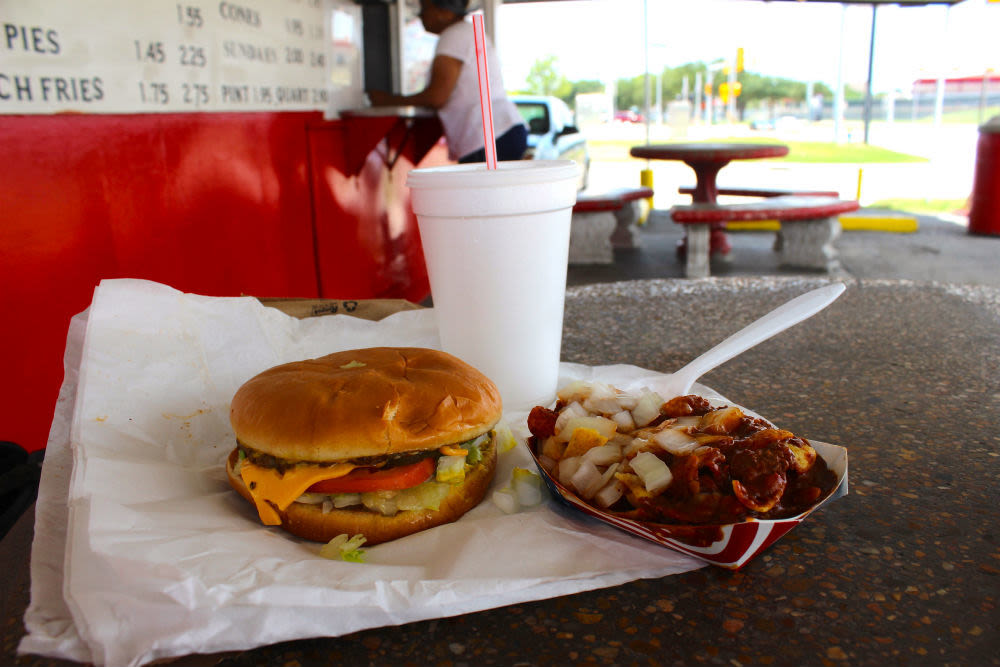
Except for the addition of chili cheese fries and the chocolate chip shake, Cream Burger’s menu has stayed the exact same since its founding in 1961.
Image: Katharine Shilcutt
Although there are many historic restaurants in Houston that are still run by the families who founded them, it’s rare for those families to be as involved in the day-to-day as the remaining Greenwood sisters, who are there pretty much every day, as they have been for decades. They each have their own responsibilities. While Beverly runs front of house in the mornings, in the evenings that position is filled by Gloria, 76, who is also a certified accountant and does the bookkeeping. Sandra, 64, works back of house and is responsible for all the ordering. Meanwhile, Linda, 73, alternates between both front and back of house. Although they’ve each refined their roles through the years, Beverly says they can all easily switch spots if one of the sisters is out sick or away on vacation.
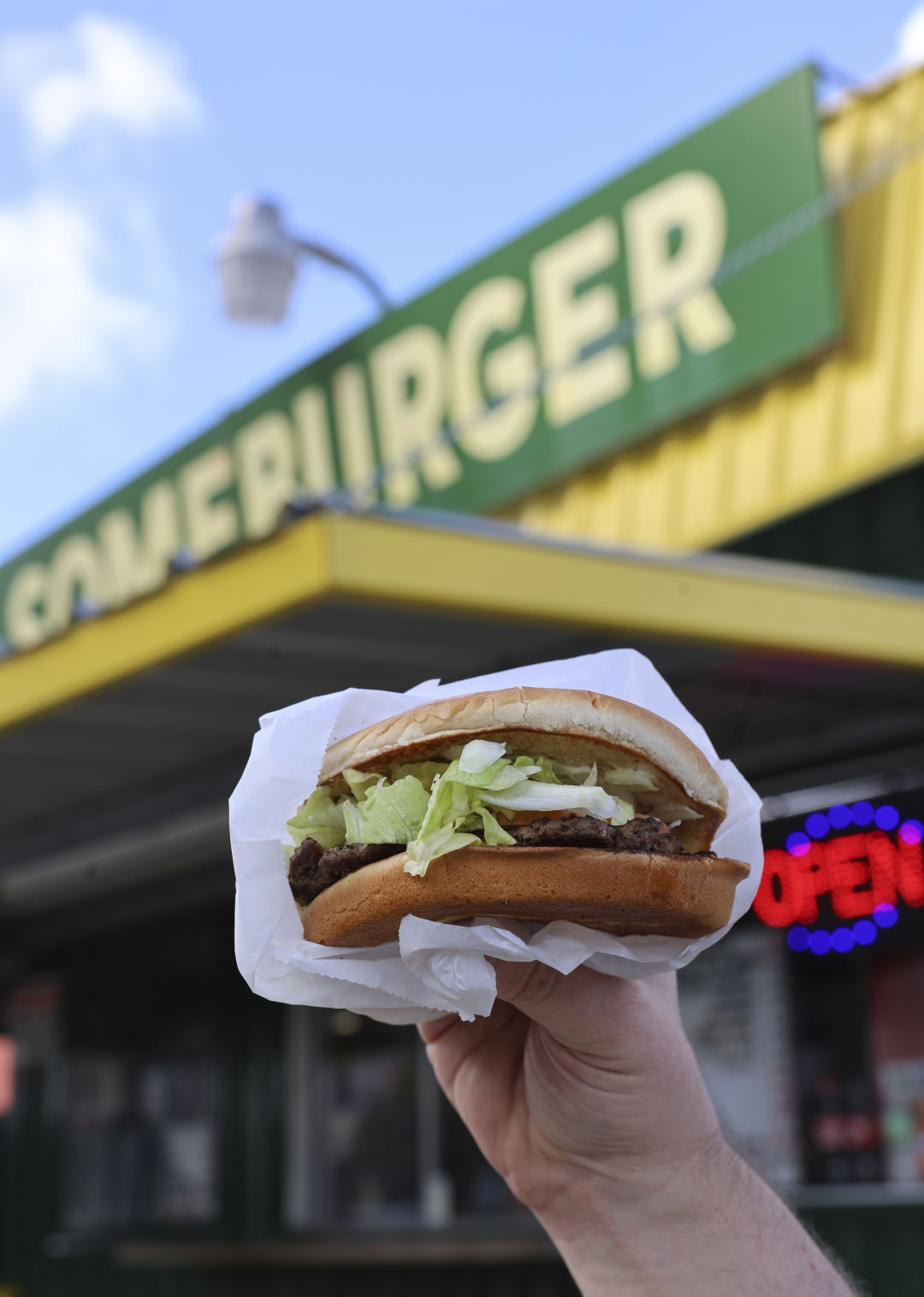
There were once 17 locations of Someburger in the Houston area. Now there are only two—one in the Heights and one in Baytown.
Image: Amy Kinkead
While mom-and-pop burger restaurants like Champ Burger and Cream Burger were once found throughout Houston, their numbers have dwindled over the years. Many of the originals opened in the 1940s, ’50s, and ’60s, the same era that saw the birth of now-huge chains like McDonald’s, Burger King, Wendy’s, and Whataburger.
“People had a bit more capital, they had a bit more freedom with cooking,” Saladino says of the economic factors that he thinks played a role in America’s burger renaissance. Saladino says Champ Burger is modeled after Someburger, one of the biggest Texas chains to emerge from that period. Although it got its start in Austin in the mid-1940s, at one point Someburger had 17 locations in the Houston area. Now, there are only two—a location in the Heights that opened in 1955 and one that opened in Baytown in 1965. Other surviving Houston burger restaurants include Poppa Burger (1963), Stanton’s City Bites (1961), MytiBurger (1967), Burger Park (1968), and Annie’s Hamburgers (1978).
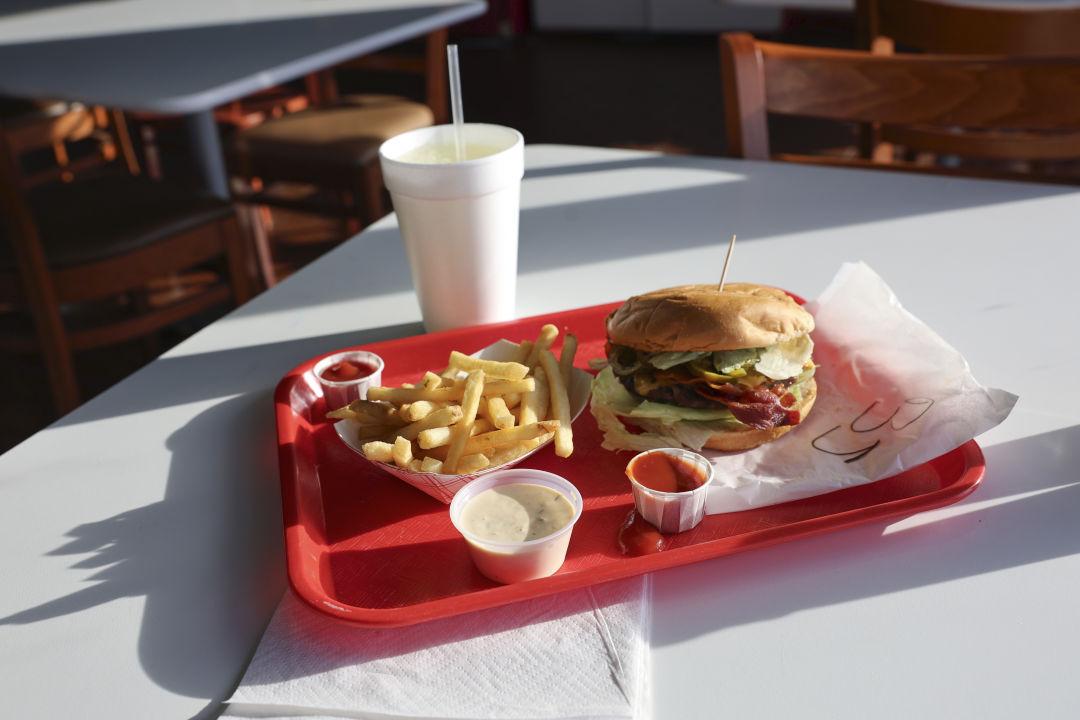
Annie's Hamburgers, located in Willowbend, has been serving burgers since 1978.
Image: Amy Kinkead
Saladino credits the continued success of Champ Burger and many of the city’s other surviving burger spots to the quality of their product. Unlike some of the industry’s biggest names—the massive chains now known for their supersized meals of questionable quality—the patties at Champ Burger never come frozen. Instead, they’re delivered fresh daily from Universal, a historic Second Ward butcher shop that has been grinding meat for Champ for decades. The shop uses an 81/19 blend of chuck that’s coarse-ground, which Saladino thinks gives his burgers a bit more flavor. “Very few, if any, people will do it,” he says. Produce is also delivered fresh daily, as are the restaurant’s buns, made by Ashcraft European Bakery in Stafford.
It’s a similar story over at Cream Burger. There’s a McDonald’s down the street from the shop, and Beverly says the workers there often visit her restaurant for lunch instead of ordering less-fresh burgers from where they work. “A lot of places, people who work there don’t eat the food because it’s not good. I eat everything here,” she says. “It’s not manufactured. Every burger we cook. I always tell people, ‘If you don’t like it, then bring it back.’”
Except for the addition of chili cheese fries and the chocolate chip shake, Cream Burger’s menu has stayed the exact same since its founding. Champ Burger's menu has also stayed mostly the same through the years, although the neighborhood’s changing palates have led Saladino to introduce some new vegetarian-friendly items, like the black bean, falafel, and Impossible burgers. The prices at both restaurants haven’t gone up that much either. A regular hamburger at Cream Burger costs only $5. Meanwhile, the most basic burger at Champ Burger will set you back $6.49. The low price point at both restaurants means they continue to be staples for local working-class families.
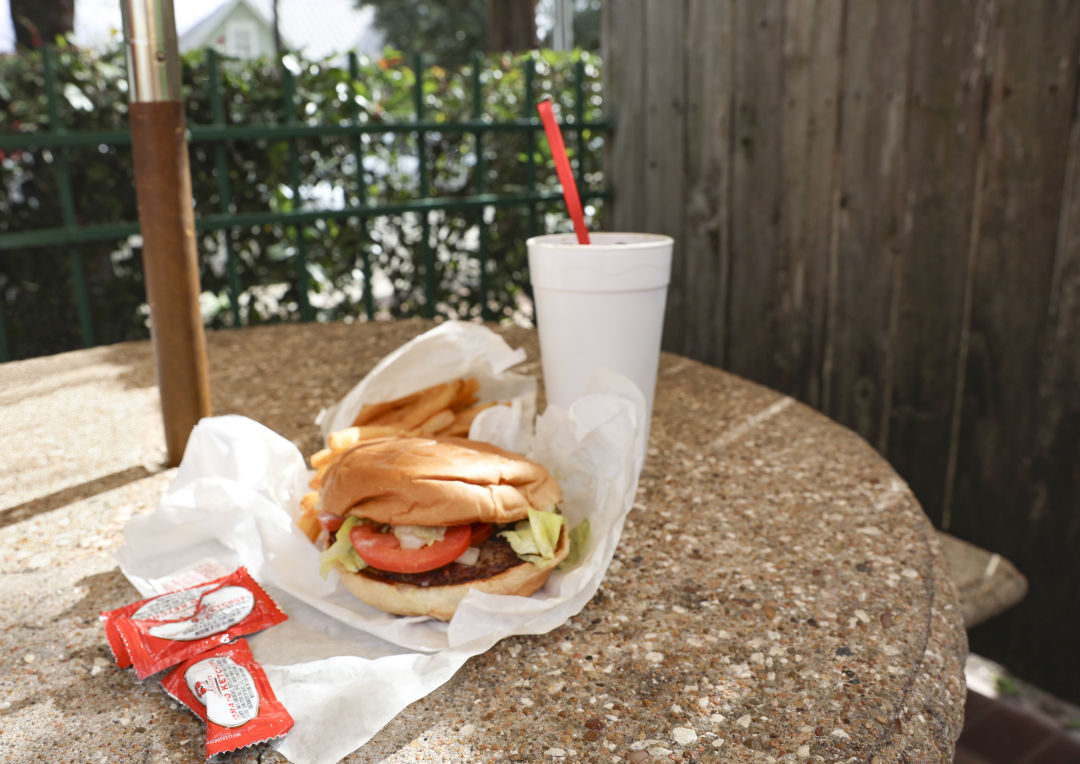
The most basic burger at Champ Burger will only set you back $6.49, a rare price point in a city inundated by $20 burger restaurants.
Image: Amy Kinkead
From his perch at Champ Burger, Saladino has watched the demographics of the surrounding neighborhood change through the years as historic factories have closed, longtime residents have sold their homes and moved out, and townhomes and new developments have gone up. Despite all the changes, some of which he is welcoming of, he still says he very much sees Champ Burger as being a place for working people.
“Gentrification. We’re getting hit hard. The old guard is complaining, and I don’t know about the new guard. We see both, and we try to accommodate both as best we can,” Saladino says. “A lot of new people are coming in, but we still have some of our old standbys. Some of the old ones have moved out, but they still come by to get a hamburger when they’re in the neighborhood.”
Cream Burger finds itself in a similar situation. Through the years Beverly has watched as older businesses around the restaurant have closed and been replaced by shiny new gas stations and luxury apartment buildings. “I would like it to stay the same, but nothing stays the same. Everything has to change,” she says.
“Things may change. Buildings may go up and go down, but I think basically the people are the same wherever you go,” she adds.
Although Saladino says he still has many years of running the business ahead of him, Beverly and her sisters are gearing up to pass the baton to the next generation. Beverly’s sister, Gloria, has a son in his 40s who has shown interest in eventually taking the restaurant over, but it’s not confirmed yet. “I would like it to go on,” Beverly says. “But if it can’t go on with the quality that we put into it, then I would like to see it fold—go out with a big bang—instead of lingering on.”
Saladino, who has lived with the legacy of a family business hanging over him his entire life, understands the pressure.
“It’s not only a business,” he says. “You’re expected to keep the legacy going. It’s not only how much you pay for bacon and how much you’re selling it for. It’s your family. That’s a responsibility in itself right there.”




